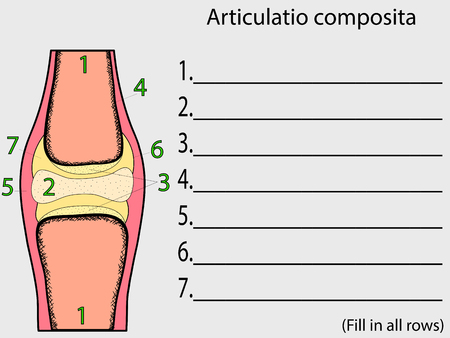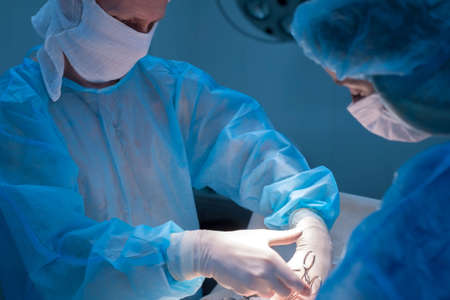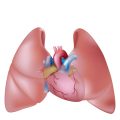1. Overview of Total Knee Replacement and the Role of Physical Therapy
Total knee replacement, often called TKR or knee arthroplasty, is a common surgical procedure in the United States. This surgery is designed to relieve pain and improve function for people whose knee joints have been damaged by arthritis, injury, or other conditions. During the procedure, surgeons remove the damaged cartilage and bone from the surface of the knee joint and replace it with an artificial joint, typically made from metal and plastic.
Who Typically Needs Total Knee Replacement?
Most patients who undergo total knee replacement are adults over 60 years old. The majority are dealing with severe osteoarthritis, but some may have rheumatoid arthritis or have experienced traumatic injuries that damaged their knee joints. In the U.S., its estimated that over 790,000 total knee replacements are performed each year, making it one of the most frequent orthopedic surgeries.
| Typical Patient Profile | Description |
|---|---|
| Age | Usually 60 years and older |
| Main Condition | Osteoarthritis (most common), rheumatoid arthritis, post-traumatic arthritis |
| Symptoms Before Surgery | Chronic knee pain, stiffness, limited mobility, decreased quality of life |
| Lifestyle Impact | Difficulty with walking, climbing stairs, standing up from chairs, or participating in favorite activities |
The Key Role of Physical Therapists in Recovery
Physical therapists (PTs) play a crucial role in helping patients recover after total knee replacement surgery. In the U.S., PTs are involved right after surgery—sometimes even on the same day as the operation. Their main goals are to help patients regain movement in their new joint, build strength in their legs, reduce swelling and pain, and safely return to daily activities as soon as possible.
How Physical Therapists Support Recovery:
- Pain Management: Teaching techniques like ice application and gentle movement to reduce discomfort.
- Mobility Training: Helping patients get out of bed safely, walk with assistive devices (like walkers or canes), and climb stairs.
- Exercise Programs: Guiding patients through exercises that restore range of motion and rebuild strength in leg muscles.
- Education: Providing information about protecting the new knee joint and preventing complications at home.
- Goal Setting: Working with patients to set realistic goals for returning to their normal routines and activities.
What to Expect from Physical Therapy After TKR?
| Timeframe After Surgery | Main PT Focus | Examples of Activities |
|---|---|---|
| Day 1-7 (Hospital Stay) | Pain control, gentle movement, safe transfers | Ankle pumps, assisted walking with walker, basic stretches |
| Week 2-6 (Home/Outpatient) | Building strength, increasing range of motion, improving walking ability | Knee bends/straightening exercises, stair training, balance drills |
| Weeks 7+ (Continued Rehab) | Restoring full function for daily life and hobbies | Aerobic exercises (stationary bike), more advanced strengthening, gradual return to normal activities |
2. Immediate Post-Op Care: Early Mobilization and Safety
The First 24-72 Hours After Total Knee Replacement
The first few days after total knee replacement surgery are crucial for setting the stage for a successful recovery. Physical therapists play a key role during this period, working closely with the medical team to ensure patient safety and encourage early movement.
Pain Management Strategies
Managing pain effectively is one of the top priorities in the immediate post-op phase. This helps patients participate in therapy and start moving safely. Common pain management strategies include:
| Method | Description |
|---|---|
| Medications | Pain relievers prescribed by the doctor, such as acetaminophen, NSAIDs, or sometimes opioids for short-term use. |
| Ice Packs | Applied to the knee to help reduce swelling and numb pain. |
| Elevation | Keeping the leg raised above heart level to decrease swelling. |
| Nerve Blocks | Anesthesia techniques used during or after surgery to target knee pain specifically. |
Minimizing Complications
After knee replacement, there is a risk of complications such as blood clots, infections, and reduced mobility. Physical therapists work with nurses and doctors to minimize these risks by:
- Encouraging ankle pumps and gentle movements to improve circulation and prevent blood clots (DVT).
- Teaching breathing exercises to lower the chance of lung complications.
- Making sure surgical dressings stay clean and dry.
- Monitoring for signs of infection, like increased redness or fever.
Early Mobilization: Why It Matters
Getting out of bed and starting to move—often within hours after surgery—is important for recovery. Early mobilization helps patients regain strength, improves joint flexibility, and reduces the risk of complications. A typical timeline might look like this:
| Time After Surgery | Activity Examples |
|---|---|
| First 24 Hours | Sitting up on the edge of the bed; standing with assistance; gentle ankle pumps; deep breathing exercises. |
| 24-48 Hours | Short walks with a walker or crutches; basic knee bending and straightening exercises; toileting with support if needed. |
| 48-72 Hours | Walking farther distances with supervision; beginning more advanced range-of-motion exercises; continuing precautions. |
Mobility Precautions and Safety Tips
Knee replacements require patients to follow certain safety guidelines to protect their new joint and avoid falls. Physical therapists teach these precautions from day one:
- Use assistive devices: Walkers or crutches are often necessary at first for balance and support.
- Avoid twisting your knee: Turn your whole body instead of pivoting on your new joint.
- Sit in chairs with arms: This makes it easier to stand up without putting extra strain on your knee.
- Keep pathways clear: Remove rugs or clutter at home before you return from the hospital.
- No high-impact activities: Avoid jumping, running, or kneeling until cleared by your doctor or therapist.
The Importance of Teamwork in Patient Safety
The best outcomes come from teamwork between physical therapists, surgeons, nurses, and family members. Regular communication helps everyone stay updated on pain levels, progress, and any concerns that arise. This collaborative approach ensures that each patients unique needs are met throughout their early recovery journey.

3. Restoring Range of Motion and Reducing Swelling
Why Range of Motion (ROM) and Swelling Control Matter
After a total knee replacement, one of the main goals is to regain normal movement in your knee while keeping swelling under control. If you let stiffness or swelling linger, it can slow down your recovery and make everyday activities harder than they need to be. Physical therapists play a big role in guiding patients through safe, effective techniques both in the clinic and at home.
Hands-On Techniques Used by Physical Therapists
- Manual Stretching: Your therapist may gently bend and straighten your knee to help loosen up tight tissues.
- Soft Tissue Mobilization: Hands-on massage around the knee helps reduce fluid buildup and breaks up scar tissue.
- Patellar Mobilizations: Moving the kneecap side-to-side and up-and-down keeps it from getting stuck as you heal.
- Ice Therapy: Applying ice packs after exercises can help reduce pain and swelling right away.
Common Home-Based Techniques
| Exercise/Technique | Description | How Often? |
|---|---|---|
| Ankle Pumps | Move your foot up and down like pressing a gas pedal to encourage blood flow. | 10-20 reps every hour while awake |
| Heel Slides | Lying on your back, slide your heel toward your buttocks, then back out straight. Helps regain bending motion. | 10-15 reps, 3-5 times/day |
| Knee Extension Stretch | Sit with your leg straight out, gently press the back of your knee toward the floor or bed. | Hold for 30 seconds, 3-5 times/day |
| Icing & Elevation | Prop your leg on pillows above heart level and apply an ice pack for 15-20 minutes. | Every 2-3 hours as needed for swelling |
| Circumferential Compression | Use an elastic bandage (like an ACE wrap) as instructed by your therapist to help control swelling. | As directed; remove periodically to check skin |
Setting Realistic Milestones: What to Expect Week by Week
| Time After Surgery | Knee Bending (Flexion) | Knee Straightening (Extension) | Main Focus |
|---|---|---|---|
| 1 Week | Bend to about 45°–60° | Straighten within 10° of flat | Pain control, start gentle movement, manage swelling |
| 2 Weeks | Bend to about 70°–90° | Straighten within 5° of flat | Add more stretching, keep swelling down, walk with support as needed |
| 4 Weeks+ | Bend past 90°, working towards 110°–120° over time (enough for daily tasks) | Aim for fully straight (<0–2°) | Improve strength and balance, maintain ROM gains, minimize swelling flare-ups |
The Importance of Consistency and Patience
Your progress depends a lot on sticking with your therapy plan every day. Some days will feel better than others—don’t get discouraged if improvement seems slow. Celebrate small wins like being able to bend a little farther or seeing less swelling at night. Talk openly with your physical therapist about any concerns or struggles so they can adjust your program and keep you moving forward safely.
4. Strengthening and Functional Retraining
Personalized Exercise Progression After Total Knee Replacement
After a total knee replacement, rebuilding strength and regaining function are key goals. A physical therapist will create a tailored exercise plan that evolves as you recover. This approach ensures your rehab fits your unique needs, daily routines, and lifestyle activities common in the United States.
Phases of Strengthening Exercises
| Phase | Main Goals | Example Exercises |
|---|---|---|
| Early (Weeks 1-2) | Reduce swelling, gentle motion, activate muscles | Ankle pumps, quad sets, heel slides, gentle assisted knee bends |
| Middle (Weeks 2-6) | Increase muscle strength, improve knee motion | Straight leg raises, mini squats, step-ups on low steps, stationary cycling |
| Advanced (Week 6+) | Build endurance, functional skills for daily living | Standing marches, wall sits, resistance band exercises, balance drills |
Functional Retraining for American Daily Activities
Your physical therapist will incorporate activities that mirror everyday tasks in American life. Here’s how training can target important skills:
| Activity | Why It Matters | Training Focus |
|---|---|---|
| Getting in/out of a car | Essential for independence and community participation | Practice hip and knee bending, pivoting safely, using hands for support if needed |
| Using stairs at home or public places | Common in multi-story homes and public buildings in the U.S. | Step-up/step-down exercises, building single-leg strength and confidence with handrails |
| Walking on different surfaces (sidewalks, grass) | Covers typical environments like parks or city blocks | Balance training, gait drills on varied surfaces to boost stability and safety outdoors |
| Sitting down and standing up from a chair or toilet seat | Critical for home safety and self-care independence | Sit-to-stand repetitions using proper knee alignment and muscle engagement; practice without using hands as strength improves |
| Lifting groceries or household items | Keeps you engaged in daily chores and errands comfortably | Bending at hips/knees with good posture; light weightlifting with safe technique once cleared by your therapist |
Tips for Safe Progression and Motivation
- Pace Yourself: Increase exercise intensity gradually—listen to your body.
- Mimic Real-Life Tasks: Practice movements that match your daily routines for faster return to normal life.
- Add Variety: Mix up exercises to challenge different muscles and prevent boredom.
- Stay Consistent: Regular sessions—even short ones—are more effective than sporadic efforts.
5. Promoting Long-Term Success and Patient Independence
Empowering Patients Through Education
After a total knee replacement, it’s important for patients to understand how to care for their new joint in daily life. Physical therapists play a key role in educating patients about safe movement, avoiding risky activities, and recognizing early signs of complications. Simple instructions—like not kneeling on hard surfaces or twisting the knee suddenly—can go a long way in protecting the joint.
Common Patient Questions and Answers
| Question | Physical Therapist’s Advice |
|---|---|
| When can I drive again? | Usually 4-6 weeks after surgery, when you have good control of your leg and are off pain meds. Always check with your surgeon first. |
| Is it okay to kneel? | Kneeling is generally discouraged, especially on hard surfaces. If you must kneel, use padding and move slowly. |
| What should I do if my knee swells? | Rest, elevate your leg, apply ice, and call your healthcare provider if swelling persists or gets worse. |
Maintenance Strategies for Joint Health
Keeping your new knee healthy means staying active but not overdoing it. Here are some simple strategies:
- Stick to Your Home Exercise Program: Continue the exercises prescribed by your physical therapist, even after formal PT ends.
- Maintain a Healthy Weight: Extra pounds put extra stress on your knee joint.
- Avoid High-Impact Activities: Choose low-impact sports like walking, swimming, or cycling instead of running or jumping.
- Regular Check-Ups: Visit your orthopedic doctor as recommended to monitor your progress.
Utilizing Community Resources
You don’t have to go through recovery alone! There are many community resources in the U.S. that support long-term success after knee replacement:
- Outpatient Physical Therapy Clinics: These clinics offer ongoing rehab sessions and supervised exercise programs.
- Senior Centers: Many centers offer group exercise classes tailored for joint health and social support.
- Parks & Recreation Programs: Local programs often include gentle yoga, aquatic therapy, or walking groups suitable for post-knee replacement recovery.
Guidance for Returning to Activities
Your physical therapist can help you safely return to daily activities and hobbies. Here are some common milestones:
| Activity | Typical Timeline* | Tips for Safety |
|---|---|---|
| Walking without an assistive device | 4-8 weeks post-op | Start indoors; increase distance gradually outdoors. |
| Driving | 4-6 weeks post-op (right knee); 2-3 weeks (left knee with automatic car) | No narcotics before driving; test braking ability first. |
| Lifting light objects/household chores | 6-8 weeks post-op | Bend at the hips, not knees; ask for help if needed. |
| Returning to work (desk job) | 6-8 weeks post-op | If job involves standing/lifting, discuss with your PT and employer. |
| Sports & recreational activities | 3+ months post-op (low-impact only) | Avoid high-impact sports; get clearance from your PT or surgeon first. |
*Timelines may vary based on individual recovery speed and medical advice. Always follow your healthcare team’s recommendations.
The ultimate goal is for every patient to feel confident managing their own care and enjoying an active lifestyle with their new knee!


